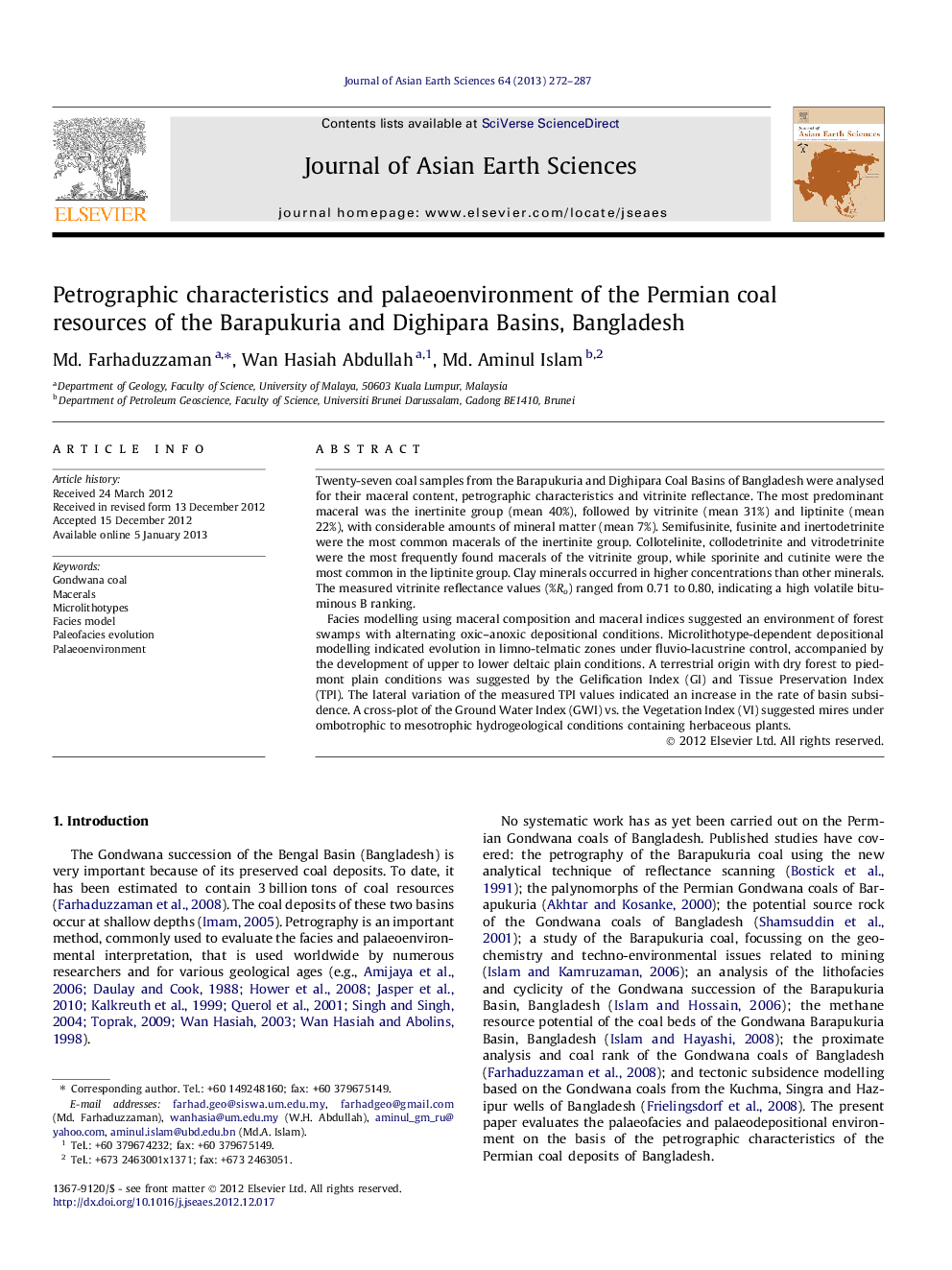| Article ID | Journal | Published Year | Pages | File Type |
|---|---|---|---|---|
| 4731250 | Journal of Asian Earth Sciences | 2013 | 16 Pages |
Twenty-seven coal samples from the Barapukuria and Dighipara Coal Basins of Bangladesh were analysed for their maceral content, petrographic characteristics and vitrinite reflectance. The most predominant maceral was the inertinite group (mean 40%), followed by vitrinite (mean 31%) and liptinite (mean 22%), with considerable amounts of mineral matter (mean 7%). Semifusinite, fusinite and inertodetrinite were the most common macerals of the inertinite group. Collotelinite, collodetrinite and vitrodetrinite were the most frequently found macerals of the vitrinite group, while sporinite and cutinite were the most common in the liptinite group. Clay minerals occurred in higher concentrations than other minerals. The measured vitrinite reflectance values (%Ro) ranged from 0.71 to 0.80, indicating a high volatile bituminous B ranking.Facies modelling using maceral composition and maceral indices suggested an environment of forest swamps with alternating oxic–anoxic depositional conditions. Microlithotype-dependent depositional modelling indicated evolution in limno-telmatic zones under fluvio-lacustrine control, accompanied by the development of upper to lower deltaic plain conditions. A terrestrial origin with dry forest to piedmont plain conditions was suggested by the Gelification Index (GI) and Tissue Preservation Index (TPI). The lateral variation of the measured TPI values indicated an increase in the rate of basin subsidence. A cross-plot of the Ground Water Index (GWI) vs. the Vegetation Index (VI) suggested mires under ombotrophic to mesotrophic hydrogeological conditions containing herbaceous plants.
► Coal macerals (inertinite > vitrinite > liptinite) identified by petrographic methods. ► Characterisation of microlithotypes (trimaceral > bimaceral > monomaceral). ► The high volatile bituminous rank of the coals was defined. ► Palaeofacies and palaeoenvironmental evolution determined by maceral associations. ► Coal evolved from alternating oxic–anoxic depositional conditions in forest swamps.
